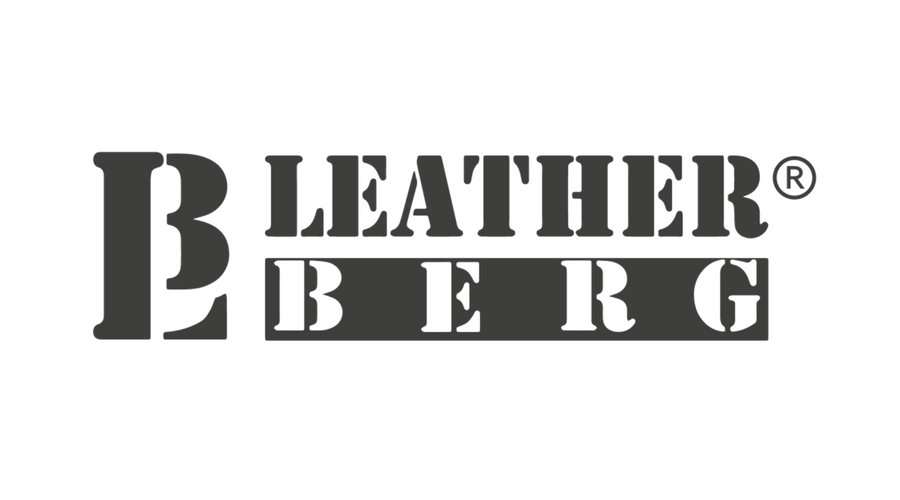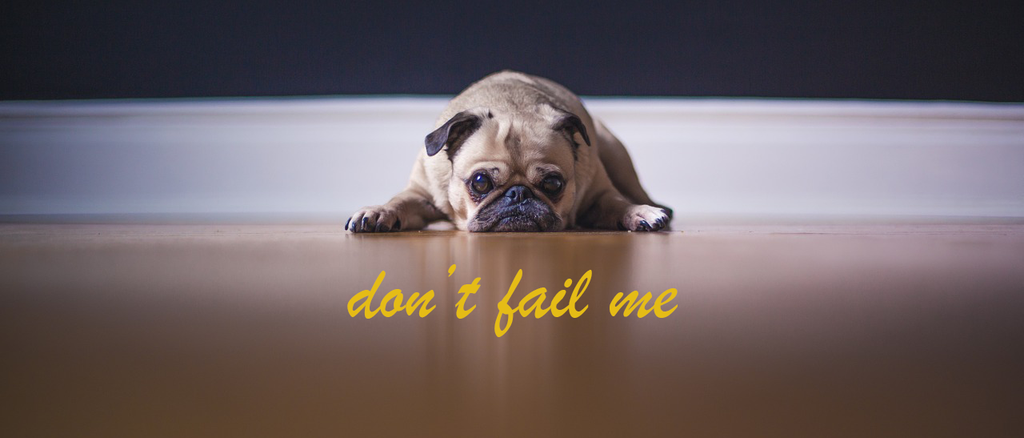Before we start with this education session, we would like to inform you about our monthy giveaway contests. So each month we will gift 1 or multiple Leatherberg products to those who subscribe to our list, (on the bottom of the webpage). So, yeah, if you want to participate, feel free to subscribe. The only requirement is to answer the question we will send you on the email and once you recieve the product send us back the image of your dog wearing our product.
Anyway, this week we have another interesting topic. And here we go.
How To Avoid Puppy Training Failures?
PUPPY TRAINING BASICS
House training is one of the most important parts of training any dog to be a valued part of the family. As with many other aspects of dog training, the best way to house train a dog is to use the dog’s own nature to your benefit.
The great thing about dogs, and the thing that can make house training much easier, is that dogs are instinctively very clean animals. Dogs would rather not soil the areas where they sleep and eat. In addition, dogs are very good at developing habits regarding where they like to urinate and defecate. For example, dogs that are used to eliminating on concrete or gravel will prefer to eliminate there rather than on grass or dirt. It is possible to use these natural canine habits when house training your dog.
Setting Up the Training Area
The first step in house training your dog is to set up your training area. A small, confined space such as a bathroom, or part of a kitchen or garage, works best as a training area. This method of training differs from crate training. Crate training is great for puppies and small dogs, but many larger dogs find a crate too confining.
It is important for the owner to spend as much time in the training area with his or her dog as possible. It is important for the owner to play with the dog in the training area, and to let the dog eat and sleep in that area. The dog should be provided with a special bed in the training area, anything from a store bought bed to a large towel to a large box. At first, the dog may eliminate in this area, but once the dog has recognized it as his or her own space, he or she will be reluctant to soil it.

After the dog has gotten used to sleeping in the bed, the owner can move it around the house, relocating it from room to room. When you are not with your dog, the dog should be confined to the training area.
Setting Up the Toilet Area
The second part of house training is to set up the toilet area for the dog. It is important for the dog to have access to this place every time he or she needs to eliminate. It is also important for the owner to accompany the dog each time until he or she gets into the habit of eliminating in the toilet area. This will ensure that the dog uses only the established toilet area.
A set feeding schedule makes the house training process a lot easier for both the owner and the dog. Feeding the dog on a regular basis will also create a regular schedule for the dog’s toilet habits. Once you know when your dog is likely to need to eliminate, it will be simple to guide the dog to the established toilet area.
Once the dog has established a toilet area and is using it on a regular basis, it is very important to not confine the dog without access to the toilet area for long periods of time. That is because if the dog is unable to hold it, he or she may be forced to eliminate in the training area. This habit can make house training much more difficult.
Continuing the House Training Process
After the dog is consistently eliminating in the toilet area and not soiling the training area, it is time to extend that training area to the rest of the home. This process should be done slowly, starting with one room and slowly expanding to the rest of the house. The area should only be extended once you are sure of the dog’s ability to control its bladder and bowels.
When you first expand the training area to a single room, let the dog eat, play and sleep in that room, but only when supervised. When it is not possible to supervise the dog, place it back in the original training area. Then, after the dog has accepted the room as an extension of the original training area, the area can be extended.
Speeding up the Process
If this process is too lengthy for your needs, it can be speeded up, but it is important to proceed cautiously. It is easier to take your time up front than to retrain a problem dog later. One way to successfully speed up house training is to praise and reward the dog each and every time it uses the established toilet area. It is also important not to punish the dog for mistakes. Punishment will only confuse the dog and slow down the house training process.
The Do’s and Don’ts of House Training
House training a puppy is very important for the well-being of both the puppy and the owner. The number one reason that dogs are surrender to animal shelters is problems with inappropriate elimination, so it is easy to see why proper house training is such an important consideration.
It is important to establish proper toilet habits when the puppy is young, since these habits can last a lifetime, and be very hard to break once they are established. It is very important for the owner to house break the puppy properly. In most cases, true house training cannot begin until the puppy is six months old. Puppies younger than this generally lack the bowel and bladder control that is needed for true house training.
Puppies younger than six months should be confined to a small, puppy proofed room when the owner cannot supervise them. The entire floor of the room should be covered with newspapers or similar absorbent materials, and the paper changed every time it is soiled. As the puppy gets older, the amount of paper used can be reduced as the puppy begins to establish a preferred toilet area. It is this preferred toilet area that will form the basis of later house training.
The Do’s of House Training Your Puppy:
- Always provide the puppy with constant, unrestricted access to the established toilet area.
- When you are at home, take the puppy to the toilet area every 45 minutes.
- When you are not at home or cannot supervise the puppy, you must be sure the puppy cannot make a mistake. This means confining the puppy to a small area that has been thoroughly puppy proofed. Puppy proofing a room is very similar to baby proofing a room, since puppies chew on everything.
- Always provide a toilet area that does not resemble anything in your home.
- Training the puppy to eliminate on concrete, blacktop, grass or dirt is a good idea. The puppy should never be encouraged to eliminate on anything that resembles the hardwood flooring, tile or carpet he may encounter in a home.
- Praise and reward your puppy every time he eliminates in the established toilet area. The puppy must learn to associate toileting in the established areas with good things, like treats, toys and praise from his owner.
- Always keep a set schedule when feeding your puppy, and provide constant access to fresh, clean drinking water. A consistent feeding schedule equals a consistent toilet schedule.
- Using a crate can be a big help in helping a puppy develop self-control. The concept behind crate training is that the puppy will not want to toilet in his bed area.
- And finally, it is important to be patient when house training a puppy. House training can take as long as several months, but it is much easier to house train right the first time than to retrain a problem dog.

The Don’ts of House Training Your Puppy:
- Never reprimand or punish the puppy for mistakes. Punishing the puppy will only cause fear and confusion.
- Do not leave food out for the puppy all night long. Keep to a set feeding schedule in order to make the dog’s toilet schedule as consistent as possible.
v Do not give the puppy the run of the house until he has been thoroughly house trained. - House training is not always the easiest thing to do, and some dogs tend to be much easier to house train than others. It is important, however to be patient, consistent and loving as you train your dog. A rushed, frightened or intimidated dog will not be able to learn the important lessons of house training. Once you have gained your puppy’s love and respect, however, you will find that house training your puppy is easier than you ever expected.
Dealing with House Training Your Dog
House training is one of those issues that every dog owner must grapple with. In most cases house training is the first major milestone in the relationship between owner and dog, and it can sometimes be difficult and confusing for owner and dog alike.
The best house training procedures are those that use the dog’s own instincts to the owner’s advantage. These strategies take into account the dog’s reluctance to soil the spots where he eats and sleeps. This is the concept behind den training and crate training. Dogs are very clean animals, and in nature they always avoid using their dens as toilet areas.
These kinds of natural training methods generally work very well, for both puppies and older dogs. Naturally, older, larger dogs will need a larger area for their den, and crate training is generally best used for puppies and small dogs.
When house training a dog or a puppy, however, it is important to pay close attention to the signals the dog is sending. It is also important to be consistent when it comes to feeding times, and to provide the dog with ready access to the toilet area you establish on a regular basis.
It is important as well to never try to rush the process of house training. While some dogs are naturally easier to train, most puppies and adult dogs will experience at least one or two slip ups during the house training process. When these accidents occur, it is important to not get mad and punish the dog. Accidents during house training usually mean that the owner is trying to move too fast, or that the dog has been left alone for too long. In this case, it is best to just take a step back and start the process again.
It is also important for the owner to reward the dog enthusiastically when it does its business in the appointed area. The dog should learn to associate doing its business in its toilet area with good things like treats, rewards and praise.
During the house training process, the den area starts out very small, often as small as half of a small room in the beginning. As the dog learns to control his bladder and bowels better, and the owner learns to anticipate the dog’s toilet needs, the den area can be slowly expanded. It is important not to make the den area too large too soon. The den area must be expanded slowly in order for the house training process to move along smoothly.
It is important for the dog to be properly introduced to its den. Many dogs, particularly those who have never been confined before, such as those who have spent their lives as outdoor dogs, may react to the den area as if it is a prison, and constantly whine, cry and try to escape the den. It is important that the dog learn to accept its den as a home and not a cage.
One problem many dog owners overlook when house training a dog is that of boredom. Boredom is actually the root cause of many behavior problems in dogs, including chewing and other destructive behaviors. Boredom can also be the root cause of problems with house training.

Dogs that are bored often consume large amounts of water during the day, and this excess water consumption can lead to the need to urinate often, even in its den area. Since soiling the den area goes against the dog’s nature, he can quickly become confused and frightened, thereby setting the house training program back even further.
To prevent the dog from becoming bored when you are away from home, be sure to provide him with lots of different kinds of toys, as well as a safe and secure place to sleep. In addition, a vigorous period of play time can help the dog sleep while you are away. In addition, playing with the dog in its den area will help him bond with this area and recognize it as a safe, secure home.
Dealing with House Training Issues
One of the most frequent problems I see is when clients are using potty pads. They’re using pads for a number of reasons, so asking “why” is very important. A lot of clients are using them because outside is unsafe and they’re waiting for full vaccination before teaching the dog to go out. Some have busy households and they can’t quite spend enough time watching the dog carefully.
First, clients are teaching dogs to go to the wrong location from the beginning. If one of the skills is knowing the proper route to the appropriate place, they’re teaching the wrong one. Clients also frequently splash potty pads all over the house, so that “one location,” is now understood to be the entire house. If the client is set on using potty pads make sure it is located as close to the door the dog will need to exit to go out when they are ready.
Second, potty pads contain a “dog attractant.” Since dogs use their sense of smell to tell them where they should relieve themselves, clients are teaching the wrong smell from the beginning. If the client is set on using potty pads make sure they use the dog’s scent instead of the attractant to teach them where to go. This means leaving feces and urine for a bit and making sure the pad is large enough for the dog to relieve themselves on the other end.
Finally, dogs seem confused by the substrate and similar household items like rugs. The non-woven fabric layer contains cotton, which is also in a lot of rugs and clothing, so there can be confusion when smelling for that perfect spot. Again, scenting the pads can help dogs understand what smell they should be looking for. Translating this to outside, they will mark and over-mark their last spots. This knowledge is brought to you by The Modern Dog Trainer.
Instincts
The best house training uses the dogs own instincts to avoid soiling its bed to train the dog where and where not to eliminate. That is the basis behind crate training, in which the dog is confined to its crate in the absence of the owner, and den training, in which the dog is confined to a small area of the home. In essence, the crate, or the room, becomes the dog’s den. Dogs are naturally very clean animals, and they try their best to avoid using their dens as toilets.
This type of training usually works very well, both for puppies and for older dogs. Problems with this type of toilet training are usually the result of not understanding the signals the dog is sending, not being consistent with feeding times, or trying to rush the process.
While the house training process can be sped up somewhat by consistently praising the dog and rewarding it for toileting in the proper place, some dogs cannot be rushed through this important process. It is always best to house train the dog properly the first time than to go back and retrain a problem dog.

Wait but what if .. ?
If the dog continues to soil the den area after house training, the most likely reason is that the owner has left the dog in the den for too long. Another reason may be that the den area is too large. In this case, the best strategy is to make the den area smaller or to take the dog to the toilet area more frequently.
If the dog soils the bed that has been provided in the den area, it is most likely because the owner has left the dog there for too long, and the dog had an understandable accident. Or it could be that the dog has not yet adopted this area as the bed. In addition, urinary tract infections and other medical conditions can also cause dogs to soil their beds. It is important to have the dog thoroughly checked out by a veterinarian to rule out any medical problems.
One other reason for house training accidents that many people overlook is boredom. Dogs who are bored often drink large amounts of water and therefore must urinate more frequently than you might think. If you notice your dog consuming large amounts of water, be sure to take the dog to the established toilet area more often, and provide the dog with toys and other distractions to eliminate boredom.
Boredom is the root cause of many dog behavior problems, not only house training issues. Chewing and other destructive behaviors are also often caused by boredom and separation anxiety.
Other problems with house training can occur when the dog’s den is not properly introduced. In some cases dogs can react to the den as if it is a prison or a punishment. Those dogs may exhibit signs of anxiety, such as whining, chewing and excessive barking. It is important for the dog to feel secure in its den, and to think of it as a home and not a cage.
The best way to house train a puppy or dog, or to re-house train a problem dog, is to make you aware of the dog’s habits and needs. Creating a healthy, safe sleeping and play area for your dog, as well as a well-defined toilet area, is important for any house training program.
House training is not always an easy process, but it is certainly an important one. The number one reason that dogs are surrendered to animal shelters is problems with inappropriate elimination, so a well-structured house training program can literally be a lifesaver for your dog.
And What About You?
What dog potty training method works best for you? Are there any other methods that you find helpful? Let us know in the comments below!













